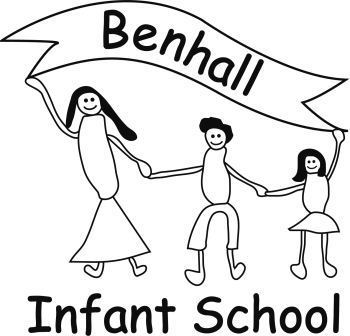Maths at Benhall
At Benhall Infant School, we believe that without mathematics, there’s nothing you can do. Everything around you is mathematics. Everything around you in number (Shakuntala Devi). We understand that for all our children to become confident mathematicians, maths teaching needs to allow the time for children to deepen their knowledge and understanding of number and maths concepts.
Key features of effective maths teaching
We understand that children need to have a secure understanding of number and place value in order to access their maths learning.
These are:
- direct teaching in frequent, short bursts – out maths meetings
- consistency of approach – calculations policy
- maintaining pace of learning
- providing repeated practice
- early identification of children at risk of falling behind, linked to the provision of effective interventions.
How we teach maths
- At Pre-School, children are exposed to number and counting in their play. Stories and rhymes that introduce number are used as opportunities to teach number sequences and that number represents a quantity.
- In reception and KS1, children follow White Rose Maths Mastery approach.
- Regular maths meetings are used to teach the sequence of learning, building on prior learning.
- By the end of reception, children will have a secure understanding of number to 10 and be able to manipulate them to solve problems.
- By the end of year KS1, children will have a secure understanding of number to 100 and be able to manipulate them to solve problems.
- Maths meetings last between 10 and 20 minutes.
- Provision activities, paired with objective led planning, facilitate opportunities for children to rehearse what they have learned. Teachers these provision tasks to assess children against the learning objective – adding scaffolding to support or challenge.
- Use manipulatives at all levels of maths teaching
The child’s progression as a mathematician
At Pre-school, I am a mini mathematician who enjoys exploring numbers in play, stories and rhyme! I can recite numbers past 5 and I am curious to find out more about numbers in the world around me.
I am able to
- Count objects to show an understanding that number links to quantity
- join in and sing counting songs and number rhymes.
- Listen to and enjoy stories that involve counting
- I can spot numbers in the environment around me
- Use mark making to represent number
In reception, I am an early mathematician who is able to develop a strong grounding in number so that I can excel mathematically. I count confidently, forwards and backwards to 10. I use what I have learnt in everyday situations. I enjoy using my knowledge and skills to solve problems involving number and shape.
I am able to:
- count objects including saying the numbers in order and matching one number name to each item.
- estimate and guess how many there might be before counting.
- join in and sing counting songs and number rhymes.
- listen to and enjoy stories that involve counting.
- look at small quantities in familiar patterns – for example a dice – and random arrangements, saying how many I can see.
- use 5 frames and 10 frames to become familiar with the tens structure of the number system.
- talk about how many spaces are filled or unfilled.
- link the number symbol (numeral) with its cardinal number value.
- explore the composition of numbers to 10
- automatically recall number bonds for numbers 0-5/0-10.
- Use vocabulary ‘more than’, ‘less than’, ‘fewer’, ‘the same as’, ‘equal to’.
- Distribute items evenly from a group.
- Understand the ‘one more than/one less than’ relationship between consecutive numbers.
- Count beyond 10, noticing patterns within the structure of counting.
- Select, rotate and manipulate shapes in order to develop my spatial reasoning skills.
- Compare length, weight and capacity.
- Continue, copy and create repeating patterns.
In KS1, I am mathematician who has a deep understanding of numbers to 100 so that I continue to excel mathematically. I have a deep understanding of the numbers to 100, the relationships between them and the patterns within those numbers. I have developed a positive attitude and interest in mathematics, I look for patterns and relationships and spot connections. My ‘have a go,’ attitude allows me talk to adults and peers about what I notice without being afraid to make mistakes.
I am able to:
- Use 10s frames to explain place value
- Use base 10, double sided counters etc to solve addition, subtraction, multiplication and division calculations
- Use bar models and place value charts to represent number
- Use jottings to support my calculations
- Automatically recall number bonds and related facts
- Spot my mistakes with support and try to correct them
- Demonstrate I am familiar with two digit numbers and am starting to notice patterns within them.
- Recall odd and even numbers
- Use mathematical language when explaining how I solved a problem
- Use arrays to show my understanding of early division and multiplication skills
- Count in 2s, 5s and 10s
- Discuss the properties of 2D and 3D shape
- Compare 2D and 3D shapes using my knowledge of the properties of shapes
- Compare length, weight and capacity and use my knowledge to solve real life problems
